The beautiful Nazaré is a town like few in Central Portugal! From the traditions that have lingered throughout the years and that are deeply related to the fishing activity, to the big waves that made this place an important touristy location, there are many reasons for you to want to visit this town.
Despite being considered a municipality since the 16th century, it was only in the 20th century that it got its present name. Until then, the municipality was called Pederneira which is now a location of Nazaré where you can still find traces from the medieval times.
In fact, the town of Nazaré is divided into three different areas: downtown, in the seafront, Pederneira, the uptown, and Sítio, located on the promontory of Nazaré and seen as the landmark of the town due to its geomorphologic richness and much more.
Disclosure: This post may contain affiliate links, meaning i get a commission if you decide to make a purchase through my links, at no cost to you. Please read my disclosure for more info.
Even though Nazaré owes a lot to the fishing activity, this town grew especially in the 20th century and beginning of the 21st century because of visitors coming here for its beautiful and pleasant beaches. In addition, the increasing interest around the big waves, brought to the spotlight by Garrett McNamara, that held the record for the biggest wave ever surfed until 2017. At that time, the American lost the record to the Brazilian Rodrigo Koxa.
But it’s not only Nazaré that is worth visiting. Discover its surroundings and wonders like Alcobaça Monastery or the amazing location of São Martinho do Porto, a touristy place, especially in the summer.
Come along with me and discover in this article the places to visit in Nazaré and surrounding area, the best itinerary, the best activities and tours, where to sleep, where to eat and the traditions and festivities.
Top 20 of the places to visit in Nazaré and surrounding area
Sommaire
- Top 20 of the places to visit in Nazaré and surrounding area
- 1. Miradouro da Pederneira
- 2. Igreja Matriz da Pederneira
- 3. Praça Bastião Fernandes
- 4. Mercado Municipal da Nazaré
- 5. Fish drying and Boats
- 6. Praia da Nazaré
- 7. Capela de Santo António
- 8. Ascensor da Nazaré
- 9. Miradouro do Suberco
- 10. Ermida da Memória
- 11. Santuário de Nossa Senhora da Nazaré
- 12. Teatro Chaby Pinheiro
- 13. Forte de São Miguel Arcanjo
- 14. Nazaré Canyon (big waves)
- 15. Praia do Norte
- 16. Monte de São Bartolomeu
- Where to park Nazaré:
- What to visit in the surrounding area of Nazaré:
- 17. São Martinho do Porto
- 18. Alcobaça
- 19. Mosteiro de Santa Maria de Cós
- 20. São Pedro de Moel
- Itinerary to visit the most beautiful places in Nazaré and surrounding area
- Where to sleep in Nazaré
- Where to eat in Nazaré and surrounding area
- Traditions and Festivities in Nazaré
- What will also interest you:
1. Miradouro da Pederneira

Located close to the street Rua do Mirante, in Pederneira, this viewpoint offers some of the most beautiful views over downtown Nazaré, its beaches, Sítio and, of course, the Atlantic Ocean.
Take the opportunity of being here and walk a few metres to the church Igreja da Misericórdia da Pederneira, a church in Mannerism style with side altars in gilded wood.
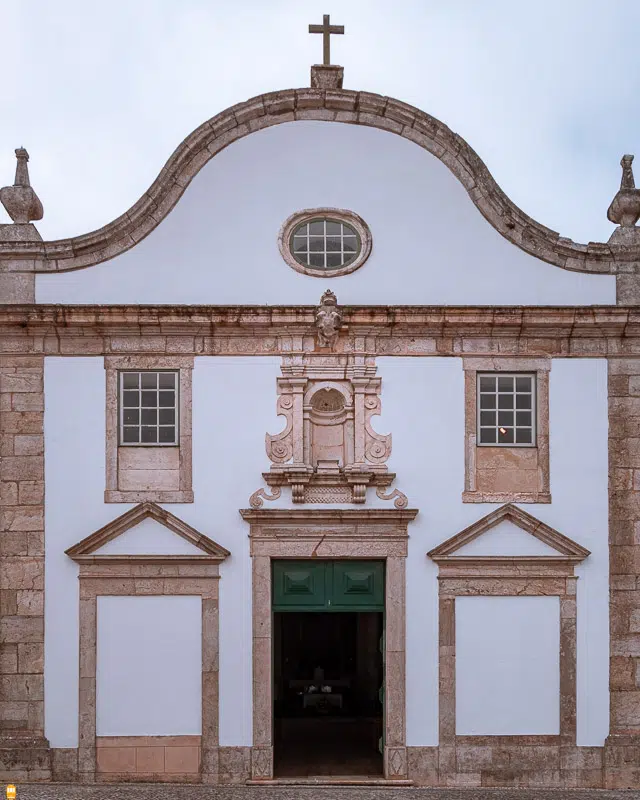


2. Igreja Matriz da Pederneira


Also known as the church Igreja de Nossa Senhora das Areias, this religious building was built in the 16th century. Inside, what stands out is its altar in gilded wood, the paintings alluding to Santo António (Saint Anthony) and the walls decorated with glazed tiles.
3. Praça Bastião Fernandes

Close to the church Igreja Matriz you’ll find the square Praça Bastião Fernandes where you can admire some of the landmarks in Pederneira’s history, more specifically the old city hall and the pillory.
Regardless of the old city building, what really stands out is the pillory.
Located in the centre of the square, this was a Manueline-style pillory until the mid 1800s, when Pederneira lost its position as a municipality to Nazaré. At that time and after the medieval pillory had been removed from that place, a million-years old fossilised trunk was put there. Despite looking very “normal” and uninteresting at first sight, the truth is that this pillory is classified as a Portuguese property of public interest.
4. Mercado Municipal da Nazaré

The municipal market is one of the most authentic places to visit in Nazaré! Here, you’ll have the opportunity to feel this region’s true atmosphere with some women fishmongers dressed in the traditional seven skirts and other sellers shouting the typical buzz phrases to captivate clients and curious people.
Don’t miss the opportunity to stop by this market if you want to buy fresh vegetables, fruit and, of course, fish, perhaps the favourite food in local gastronomy.
5. Fish drying and Boats

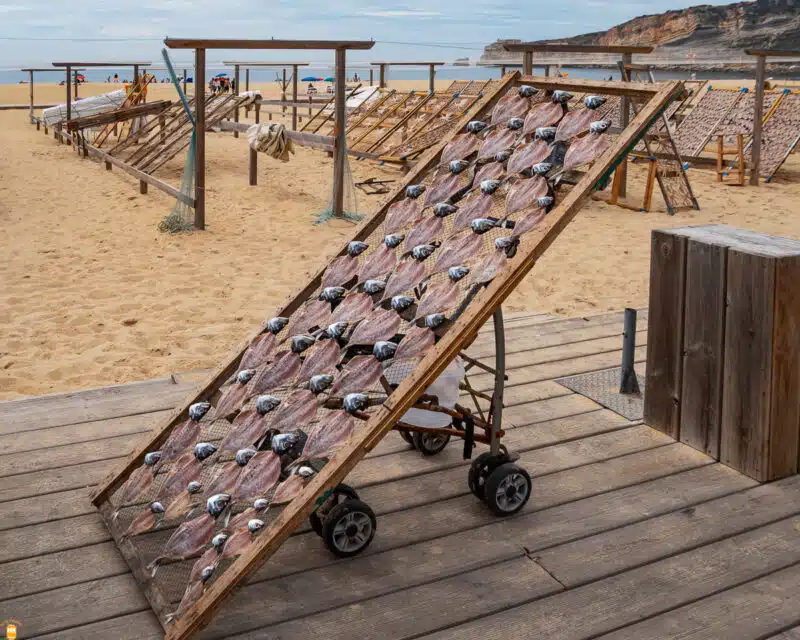
In Nazaré’s seafront, in the avenue Avenida Manuel Remígio, you’ll find one of the beautiful traditions of this town: fish drying. Here, women fishmongers put the fish on the racks and sprinkle salt so that the fish gets preserved.


Existing for many decades (perhaps centuries), drying fish appeared in Nazaré because of the necessity of preserving the fish for times when it was scarce. Apart from this, drying fish was also a way of fishmongers preserving the fish and then sell it in local markets, something that still happens to this day.
Aside from the drying fish and while at Nazaré beach, you can take the opportunity to admire the traditional fishing boats that bring the fish to shore which is then taken to the racks to dry.
One of the most traditional ways to fish is “xávega art” that consists in throwing the fishing net from the boats, close to the shore, in the morning, and then the fishing nets are pulled by fishermen and fishmongers waiting in the beach for the right time.
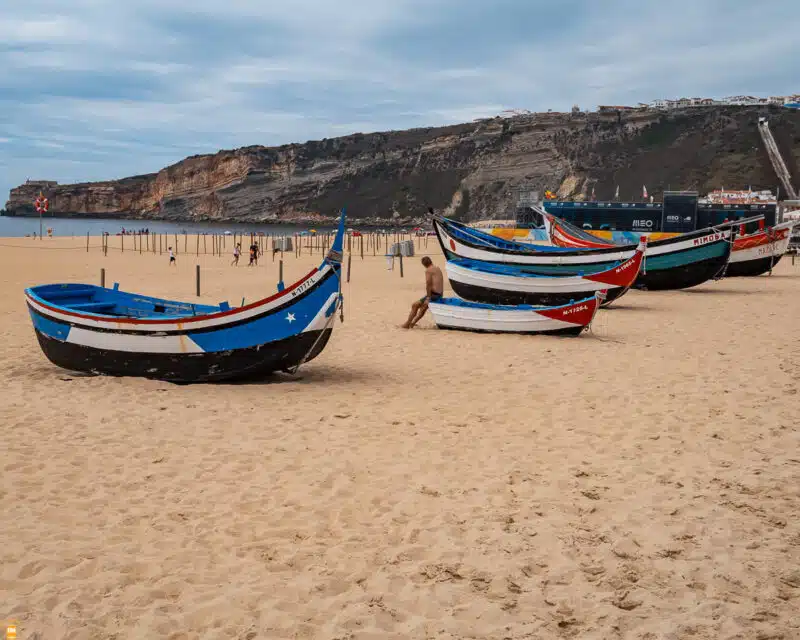

6. Praia da Nazaré

With a big sandy beach that stretches over a kilometre, Nazaré beach is definitely one of the postcards for Central Portugal. It is normal to see at this beach the already mentioned drying fish but there is much more to see: there are several parking lots located less than 500 metres from the beach, restaurants and bars close by, showers for people who want to enjoy the beach in the summer, accesses for people with reduced mobility, sunshades to rent if needed and, of course, lifeguards for any eventuality.
Apart from having the possibility to enjoy the beach, you should also know that this is one of the best places for surf and bodyboard because there are many waves all year round. For these and other reasons, it is not a surprise to know that this beach holds the blue flag, a testament of its quality.
7. Capela de Santo António

Located in Nazaré’s main avenue, in the seafront, this chapel was built in the 19th century and paid by local fishermen. What stands out in this religious building is its beautiful facade covered with glazed tiles and a panel in honor of the chapel’s patron saint, Santo António.
8. Ascensor da Nazaré
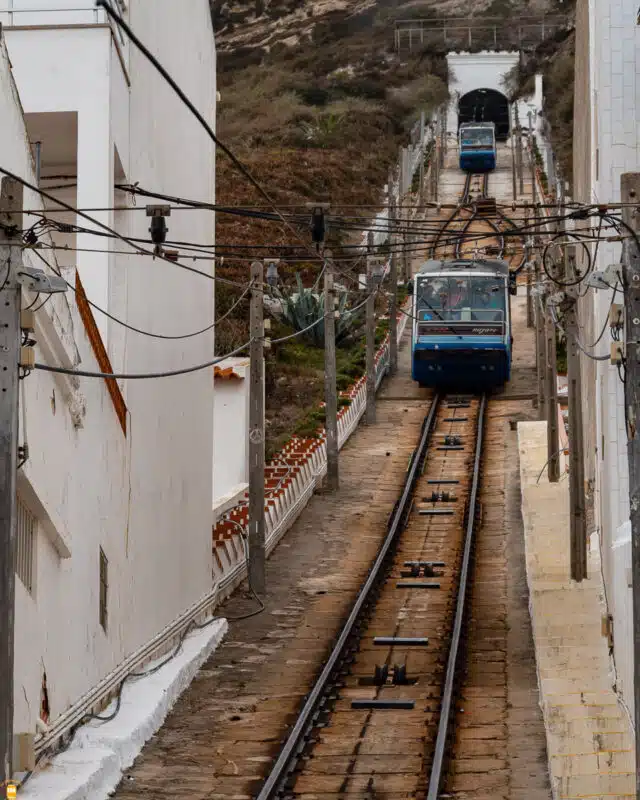

Perhaps the biggest interest point in this town (together with the big waves), Nazaré’s funicular connects downtown and Sítio, the uptown. This connection is 318 metres long and is made in the promontory, offering some of the best views over the town, the beach and the Atlantic Ocean.
You should also know that the trip will take around 15 minutes and you can do it with your family and friends because the tickets are cheap.
Information: as an alternative to the funicular, you can go for a small hike starting here or you can drive there, by taking the street Rua 25 de Abril.
9. Miradouro do Suberco

After having explored the downtown, head to the most famous viewpoint in Nazaré, located 110 metres of altitude. From here, you’ll have the opportunity to enjoy the wonderful landscape that stretches beyond the town’s limits, where the sea kisses the shore in an incomparable harmony. Don’t miss it!
10. Ermida da Memória

The small chapel Ermida da Memória is located close to the viewpoint of Suberco and is another place you can’t miss while visiting Sítio. Even though it’s small, this chapel is very beautiful and its ceiling is covered with glazed tiles; inside you’ll be equally amazed because the walls are mostly covered with glazed tiles.
In addition, inside there is a lower level where you can find an entrance to a cave that people said that whoever entered that cave would never come out. Maybe because of it, the entrance is now sealed and you’ll find there a replica of the image of Nossa Senhora da Nazaré – the original one was moved to the sanctuary across the street.
11. Santuário de Nossa Senhora da Nazaré

Founded in the second half of the 14th century, this sanctuary was built to house the beautiful image of Our Lady of Nazaré (Nossa Senhora da Nazaré). This is considered the first sanctuary in Portugal and it underwent several renovations until it got its present looks in the end of the 19th century.
The interior of this sanctuary is very beautiful and you can see glazed tile panels all around, tiles of Dutch and Portuguese origin, alluding to some biblical episodes.


But the highlight of your visit to this sanctuary will definitely be the possibility of admiring the image of Nossa Senhora da Nazaré, a wooden sculpture of Virgin Mary breastfeeding Jesus. Something out of the ordinary if not unique is the fact that this Virgin Mary is painted in dark colours.

12. Teatro Chaby Pinheiro

Built in the beginning of the 20th century, close to Nossa Senhora da Nazaré Sanctuary, the theatre Teatro Chaby Pinheiro has Italian influences and was designed in a specific way to take the maximum advantage of the acoustics.
Considered one of the cultural landmarks in Nazaré, this theatre was inaugurated in 1926 with the plays Conde Barão and Leão da Estrela. Chaby Pinheiro, one of the best Portuguese actors of that time, was present in the inauguration and the theatre was named after him.
13. Forte de São Miguel Arcanjo

Built in the 16th century during the short reign of D. Sebastião, the fort Forte de São Miguel Arcanjo was designed in a mannerist style. The king wanted to protect the inhabitants of Nazaré and Pederneira from pirates and corsairs raids that were frequent at that time in the Portuguese coastline.
During the 19th century, this fortification was taken by the Napoleonic troops that stayed there for a few months until they were kicked out by the locals.
In the beginning of the 20th century, due to the strategic location of this fort, a beacon was built so that it could guide local fishermen and other boats at sea.
Nowadays, the beacon is still working and the facilities of the fort can be visited. Needless to say, this is one of the best viewpoints that offer the best views over Nazaré and over the big waves that rise right in front of the fort.
14. Nazaré Canyon (big waves)

With unique characteristics in the Portuguese coastline, the world famous Nazaré Canyon is an undersea canyon that starts at 50 metres of depth and goes down to 5000 metres. In other words, this is a “gap” in the continental plate that stretches for 170 km, the biggest in Europe.
It’s because of this canyon that the big waves are formed in Nazaré, which made this town a world-famous location, especially for surf lovers.
As a curiosity, you should know that you can visit the Nazaré Canyon Interpretation Centre (Centro Interpretativo do Canhão da Nazaré) at the fort São Miguel Arcanjo where you can discover how the big waves are formed. Don’t miss it!
15. Praia do Norte

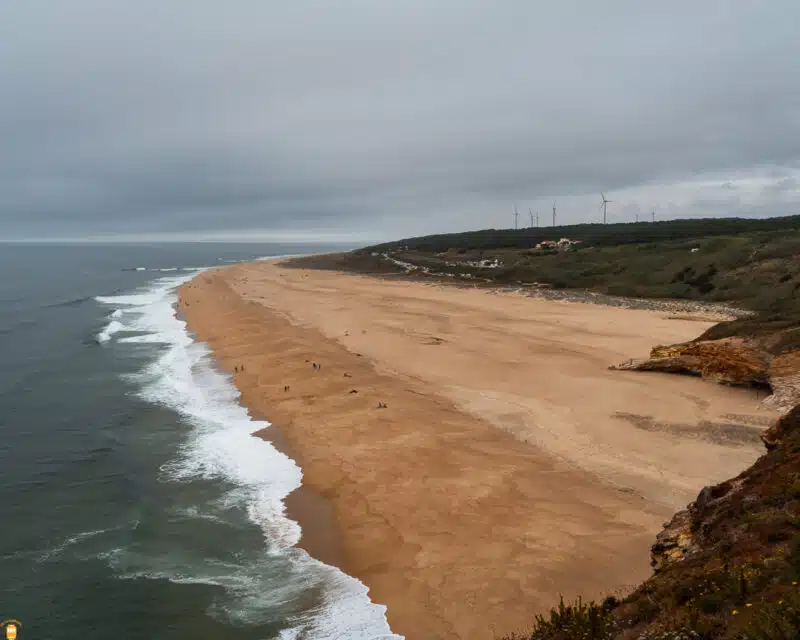
Influenced by the Nazaré Canyon, the beach Praia do Norte is one of the most famous beaches in Portugal and here you can sunbathe in the big stretch of sand. But it’s not because of this that this beach is well known, but for the big waves that you can admire from there.
The waves in this beach are perfect for nautical sports like surf and bodyboard. The Guiness world record for the biggest wave ever surfed was broken here for two times, first by Garrett McNamara and then by Rodrigo Koxa.
16. Monte de São Bartolomeu


Located 2.5 km away from Nazaré downtown, the hill Monte de São Bartolomeu, also known as Monte de São Brás, is a hill that rises at 160 metres of altitude.
This place is known by these two names because you’ll find here a chapel erected in honour of those two saints and because in February, in the day of the saint São Brás, there is a pilgrimage to this hill.
You should also know that there is a viewpoint on this hill from where you can enjoy the views over Nazaré and surrounding landscape.
Where to park Nazaré:
Praia da Nazaré
Sítio – Estrada do Farol
Praia do Norte – Parking lot
What to visit in the surrounding area of Nazaré:
17. São Martinho do Porto

Side by side with the sea and 14 km south of Nazaré, São Martinho do Porto is a well-known location and very busy, especially in the bathing season, when families rush to this place to enjoy the landscape and, of course, the beach. In fact, this has been one of the favourite destinations for decades and soon you’ll understand why.
Miradouro de São Martinho do Porto

The first point of interest you should visit at this location is São Martinho do Porto viewpoint. From here, you can enjoy some of the best views over the shell-shaped bay, the Atlantic Ocean and relax while admiring the magnificent sunset. A few metres away you’ll find a small lighthouse.
Praia de São Martinho do Porto

São Martinho do Porto beach is definitely the biggest attraction of this place. Here, families enjoy the calm waters of the Atlantic Ocean due to the almost-closed bay, a unique place in Portugal and in Europe.
Because of the calm waters, this beach is a paradise for children and for nautical sports lovers, a place where they can windsurf, kitesurf or sail.
You should also know that you’ll find, close to the beach, several restaurants, bars, but it can be troublesome to park your car, especially in the busiest days.
18. Alcobaça
Just 15 km east of Nazaré, you’ll find the city of Alcobaça, one of the biggest tourist attractions in Central Portugal.
Alcobaça Castle
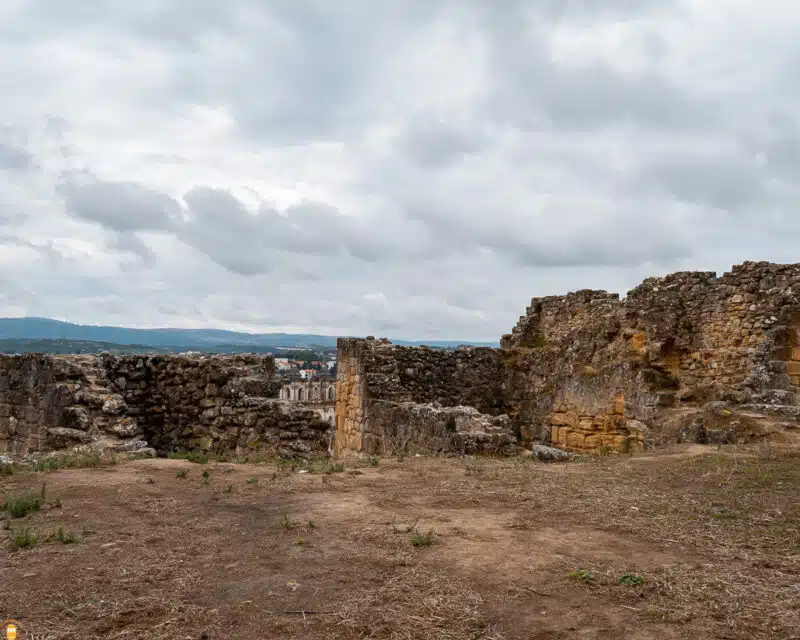
With a big and rich history, here you’ll have the opportunity to admire the ruins of Alcobaça Castle. Despite its current state, the truth is that this castle is older than the Portuguese nationality itself and was built by the Visigoths or Moors.
As usual in this military buildings, the strategic position of this castle lets people enjoy the panoramic view over the city and surrounding landscape so make sure you make a stop there!
Praça da República
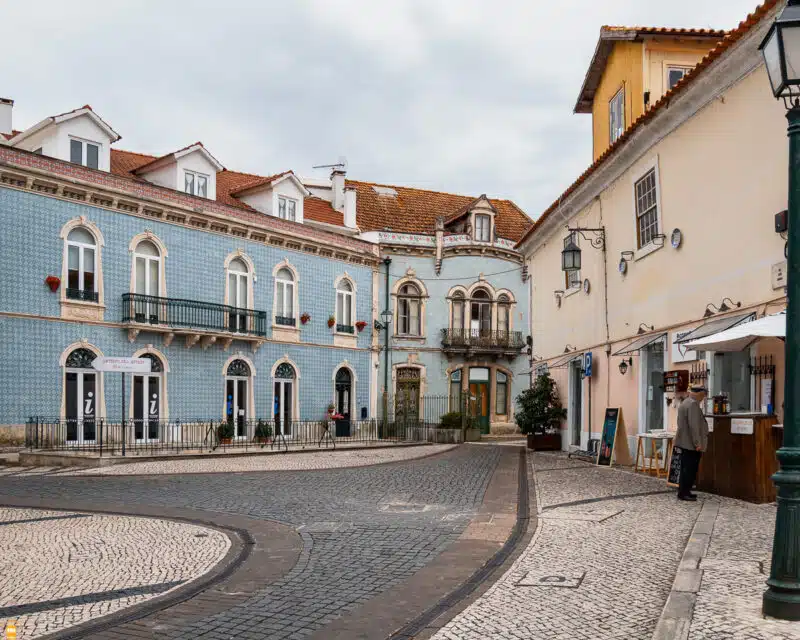
When you get to the centre of Alcobaça, park your car at the parking lot located in the avenue Avenida Dom Pedro I. Next, make a short 500-metre walk to the square Praça Dom Afonso Henriques, close to the monastery, and then cross the passage to the square Praça da República. This is a beautiful square where you’ll have the opportunity to admire the beautiful fountain while relaxing at one of the sidewalk cafés.
Mosteiro de Santa Maria de Alcobaça

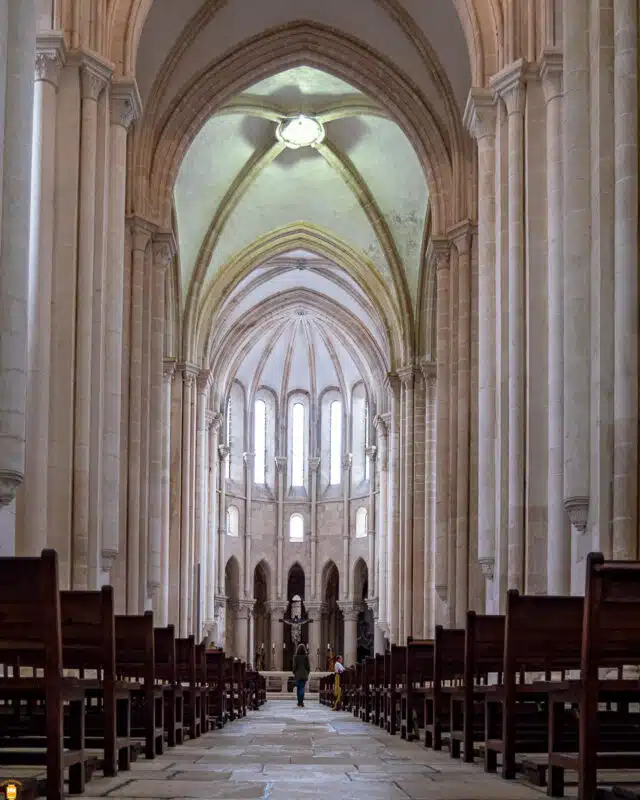
The highlight of your visit to this city will definitely be the wonderful Alcobaça Monastery, a Portuguese national monument, one of the seven wonders of Portugal and listed by UNESCO as a World Heritage Site in 1989.
The construction of this monastery began short after the creation of the Portuguese nationality in the 12th century, when king D. Afonso Henriques promised the Alcobaça domains to the Cistercian monks after the conquest of Santarém from the Moors.
Inaugurated in the following century, this monastery is a masterpiece and a unique example in Portugal of the harmony between several architectural styles like Baroque, Gothic, Manueline and Mannerism. The Baroque-style facade stands out and invites everyone to visit this monument.
Inside, there are many highlights, but I must point out the beauty of the tombs of king D. Pedro I and his beloved one, D. Inês de Castro. This couple shares one of the most beautiful yet tragic love stories of Portuguese nobility, with D. Pedro I father, king D. Afonso IV, demanding the execution of his son’s lover.
However, there are many other places you can’t miss during your visit to this wonderful monastery like the beautiful cloisters, the church, the dorms and the kitchen.




19. Mosteiro de Santa Maria de Cós
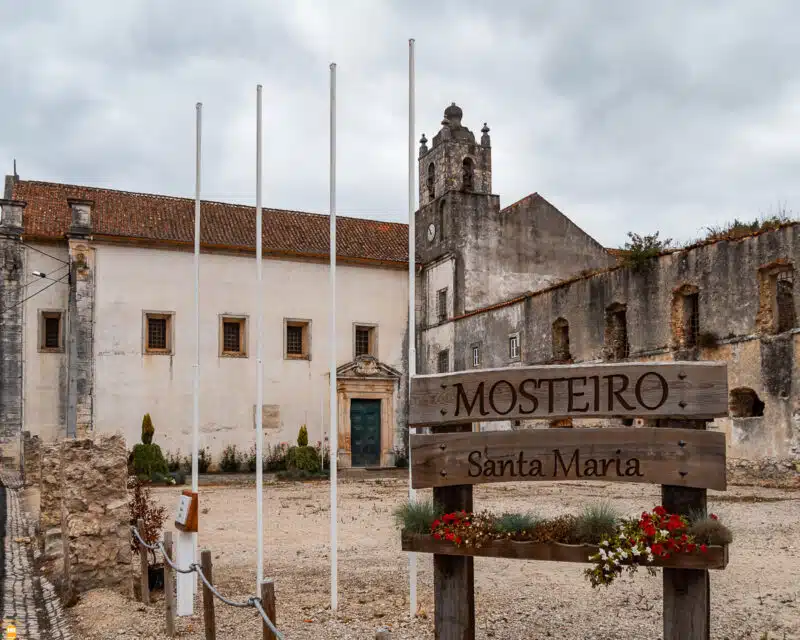
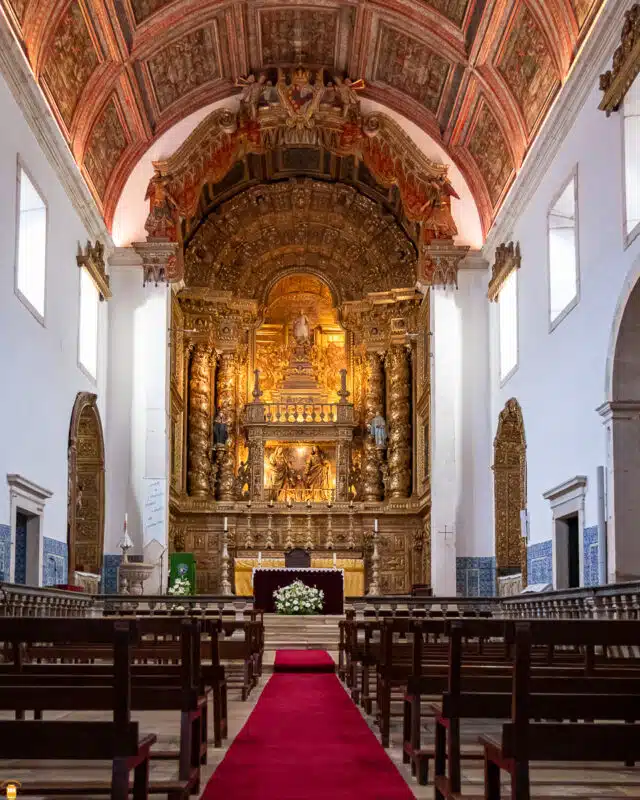
Close to 9 km north of Alcobaça, you’ll find Santa Maria de Cós Monastery. With a close connection to Alcobaça Monastery, this monastery was also a property of the Cistercian Order and, according to some studies, religious women who were widows came here to ensure the maintenance both of this and Alcabaça’s monasteries.
Throughout the centuries this monastery underwent several renovations, however it got to our days in ruins. Still, visitors can admire the church and its beautiful altar and the nave divided in two parts, one for the nuns and the other to general public. What also stands out here is the beautiful glazed tiles that cover part of the walls. A must see!

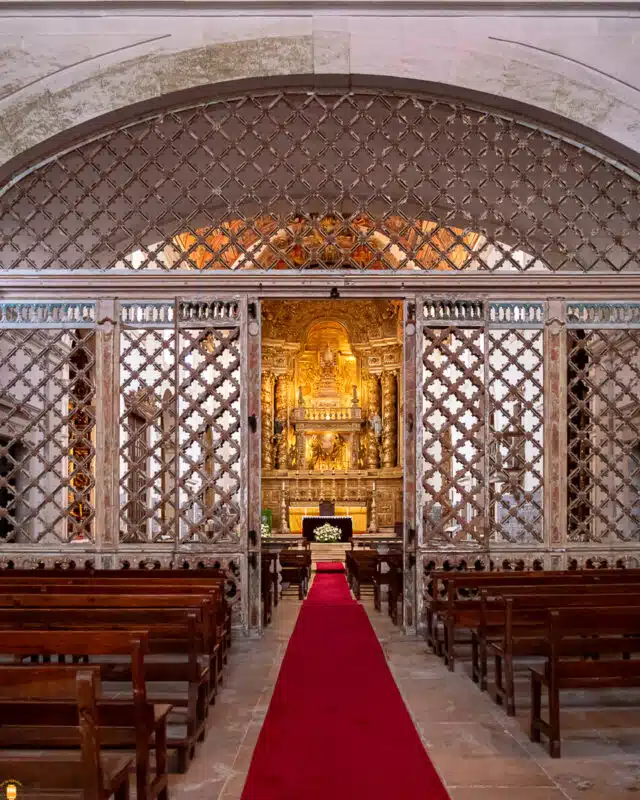
Information: if you want to have a guided tour to this monastery, head to the store located to the right of the monastery.
20. São Pedro de Moel

Located 19 km north of Nazaré, São Pedro de Moel is probably one of the most beautiful villages in the Portuguese coastline and is a place you can’t miss.
Once you get there, don’t hesitate to stroll through the picturesque streets of this village, with beautiful and colourful houses.
Next, walk along the bicycle path until you get to the lighthouse Farol Penedo da Saudade, a 32-metre high lighthouse that stands out on top of a cliff.

The beaches are another attraction that will make you want to discover this village. As one would expect, this location has very pleasant and beautiful beaches like São Pedro de Moel and Valeiras beaches.
- Necessary days to explore Nazaré and surrounding area: 2 days
Itinerary to visit the most beautiful places in Nazaré and surrounding area
Depending on the number of days of your stay in Central Portugal and to visit all the points of interest suggested in this article, you should hire a car here .
Park your car in one of the parking lots I suggested above so that you can explore Nazaré and its beautiful streets on foot. This way you’ll have time to admire all the beauty of the town but also of the surrounding area.


After having visited Nazaré return to your car and discover the other places I suggest in this article.

Where to sleep in Nazaré
Hotel Praia ****
This 4-star hotel is one of the favourite of people that want to spend the night in Nazaré not only because of its location but also for its amenities and its top-notch service.
Here, you’ll find a gym with everything you’ll need to stay fit, a swimming pool on the top floor with a terrace for you to admire the panoramic views over the town, the promontory and the sea. Some of the rooms are equipped with kitchenettes in case you want to prepare some of your meals, but know that there are several restaurants and bars in the vicinities where you can try local gastronomy.
Hotel Magic ***
Hotel Magic is located a few metres from the beach which is perfect for those who want to go for a swim or surf; don’t forget to visit the other points of interest nearby!
Apart from its great location, this hotel stands out for its wonderful and modern decoration, both in the shared areas and in the rooms. The rooms are very comfortable and are equipped with cable TV and a minibar.
Located in downtown Nazaré, Hotel Âncora offers the necessary amenities for its guests to enjoy a wonderful stay. You should know that there are comfortable rooms for you to relax after a swim at Nazaré beach, located a few metres away, or at the hotel’s private pool.
Where to eat in Nazaré and surrounding area
Rosa dos Ventos (Nazaré)
A Tasquinha (Nazaré)
Sitiado (Nazaré)
Restaurante Granada (São Martinho do Porto)
Restaurante António Padeiro (Alcobaça)
Restaurante Brisamar (São Pedro de Moel)
Traditions and Festivities in Nazaré
The town of Nazaré is deeply connected to the sea and to the activities depending on it. With that in mind, it’s no surprise that some unique traditions appeared in this community.
One of the traditions that stands out is the seven skirts (sete saias) worn by some local women. This tradition started in the first half of the 20th century and still lives to this day, even though the seven skirts are mainly used during some social and cultural events.
The origin of the seven skirts is sketchy, despite the symbolism of the number seven, but one thing is certain: the skirts were used by mothers and wives that waited on the beach for their suns and husbands while they were at sea. Some of the skirts were used to cover the women’s heads and shoulders and protect them from the cold and the ocean breeze; the remaining skirts would cover their legs.
Another tradition, already mentioned in this article, is the drying fish. This activity appeared as a way to better preserve fish for the hard days and to sell it as well.
Before drying the fish, the fishmongers trim and gut the fish, then wash it and sprinkle it with rock salt (in other times they would use salt water instead).
The final step, is to open the fish and leave it to dry for two or three days, depending mainly on the air temperature.
Nazaré also has a strong tradition in handicrafts, attractive especially for visitors. What stands out the most in this activity is the creation of wooden and ceramics miniatures of the typical fishing boats and dolls wearing the traditional seven skirts. When you visit Nazaré don’t miss the opportunity to buy at least one of these souvenirs!
The festivities in honour of Nossa Senhora da Nazaré are the biggest in town but they don’t bring the charm of other times anymore. Up until the end of the 20th century, the festivities took place in the streets of Sítio, where one could go to mass, play games, go to bullfights at the arena and much more. Thousands of people from everywhere in the country would enjoy food and drinks while admiring the fireworks.
Nowadays, the main festivities take place at Parque Atlântico, just outside Sítio, which took away some of the appeal of other times. Despite everything, you should know that you can still have a lot of fun at Parque Atlântico.

Are you going to visit Nazaré? Then don’t hesitate to book your hotel room, your car and the best activities by clicking the links below. This way you are helping me in the development of my blog and I’ll be able to offer you free tips and travel guides so that you can better prepare your visit to Portugal. Thank you!
